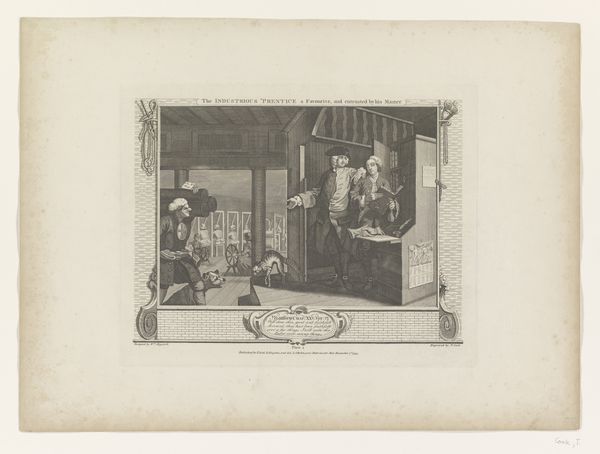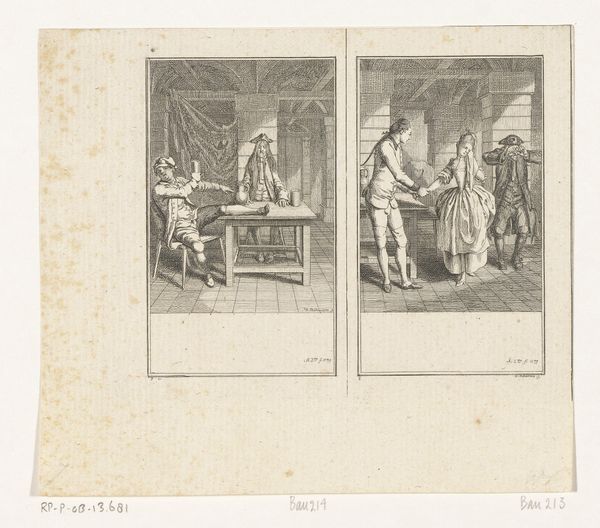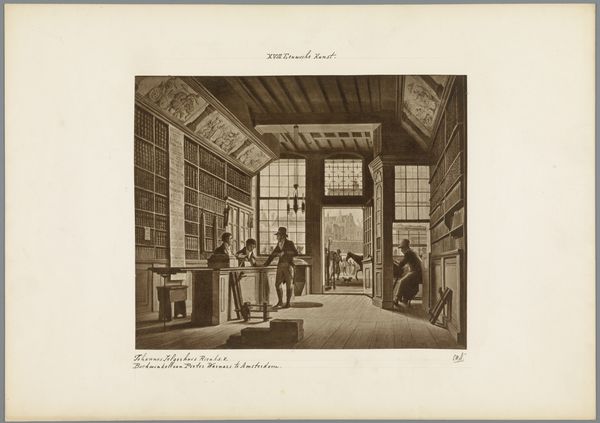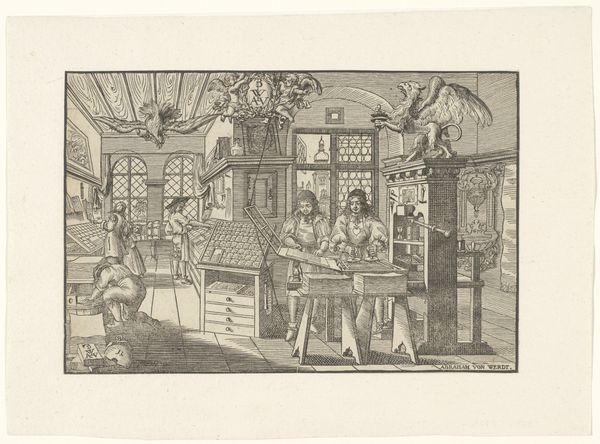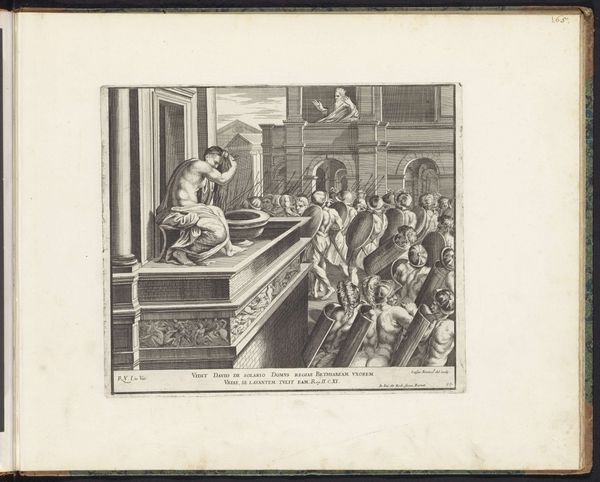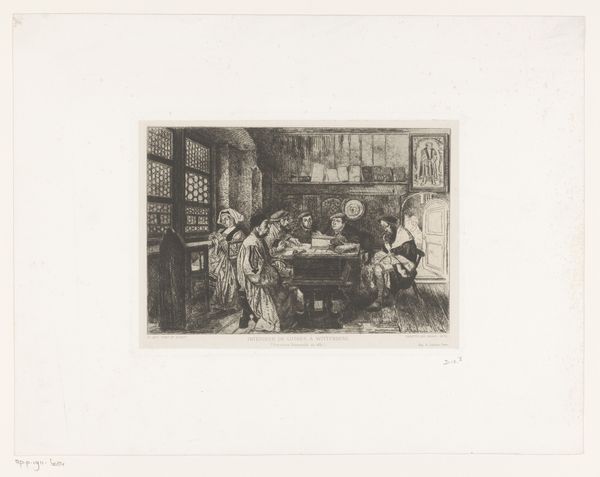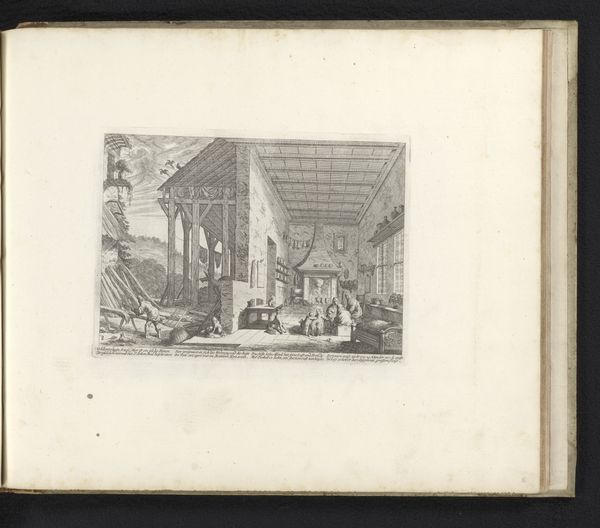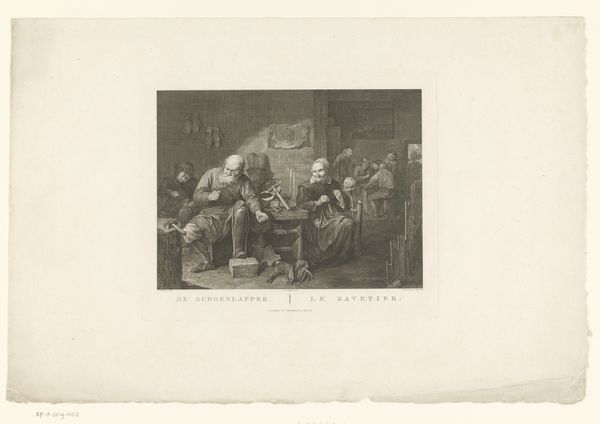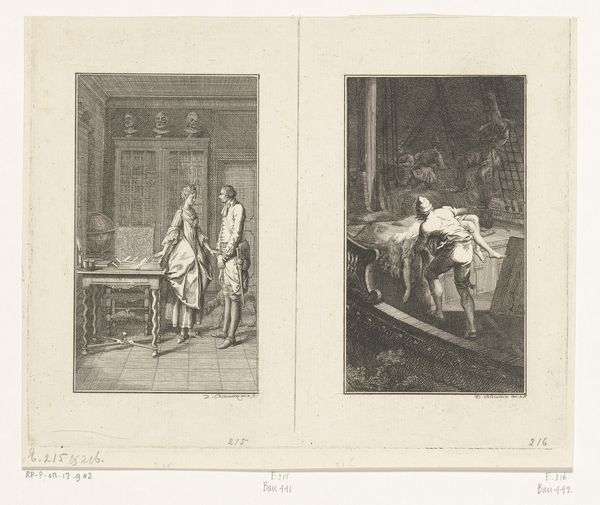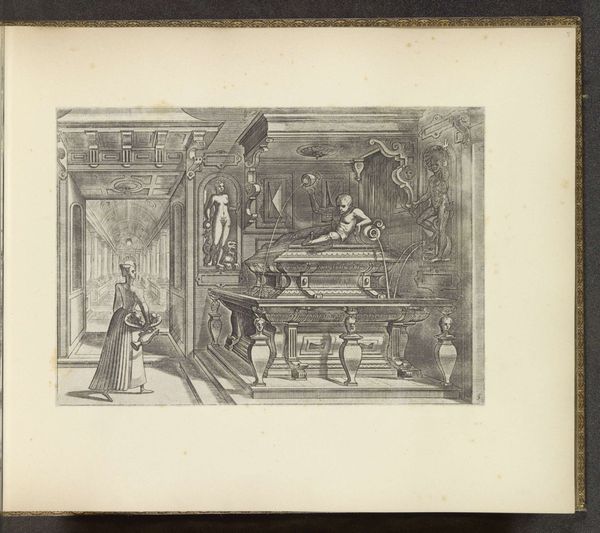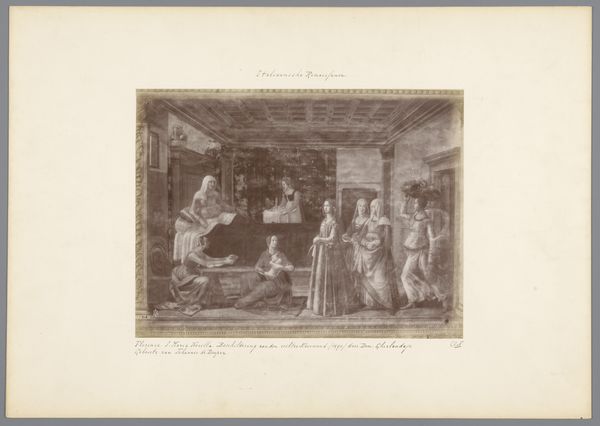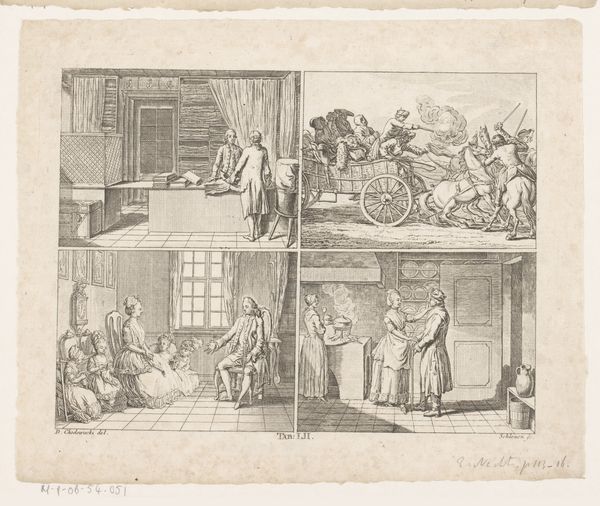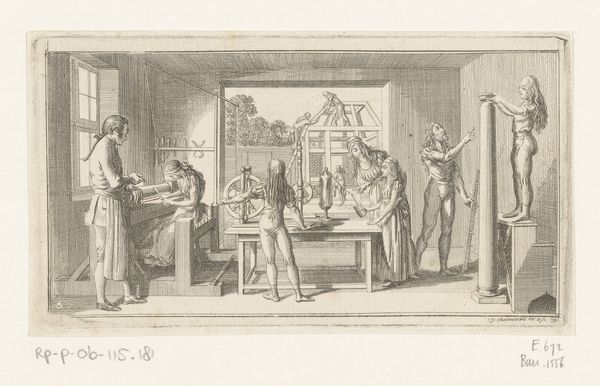
print, engraving
# print
#
old engraving style
#
11_renaissance
#
line
#
genre-painting
#
history-painting
#
engraving
Dimensions: height 109 mm, width 142 mm
Copyright: Rijks Museum: Open Domain
Curator: What we have here is a 17th-century engraving, currently held at the Rijksmuseum. It's called "Interieur van een boekdrukkerij," or "Interior of a Printing Office." It's attributed to Anonymous. Editor: It's stark, almost clinical in its depiction. The precise linework lends a kind of detached observation, like we’re flies on the wall watching a very specific, demanding type of labor. Curator: Exactly. Let’s consider the means of production displayed. The composition clearly shows different stages of bookmaking: typesetting, operating the press itself, examining and stacking newly printed sheets. Each worker fulfills a different role in the process. Editor: And it places them all within a defined social structure. I see class implications embedded in the image. The workers’ postures are bent, straining under the labor. Their clothes are plain, meant for work, not for display. I’d also note the architecture—high windows that suggest an earlier ecclesiastical origin. How does the building’s former role speak to the printing work taking place within its walls? Curator: That's an excellent point. We have to remember that the advent of printing dramatically shifted power. Knowledge became democratized to some extent; though of course access to books remained limited, and the labour was still hard. Think about the materials involved—paper, ink, the wooden press itself. Each holds its own story of production and consumption. Editor: It is a powerful moment in time. The Renaissance humanist project combined with burgeoning mercantile interests led to mass print culture—something totally unprecedented that changed Europe irrevocably, setting the stage for so much. But that didn’t mean it wasn’t work that exploited labor to spread these ideas; which is why examining images like this today reminds us about how knowledge—something ostensibly “free”—isn’t really ever “free”. Curator: It’s interesting to consider how that tension between the promise of easily reproduced ideas and the realities of the conditions necessary to generate them plays out in the image itself. It’s not glorious. There’s no real idealization here. Editor: No, instead it confronts us. These workers made it all possible and images like this remind us that intellectual advancements aren’t disconnected from their means of material production. Curator: Precisely, seeing that process as something involving labor is what helps prevent romanticizing history. Editor: I couldn’t agree more. Thanks to engravings like this, we have access to crucial insight into past cultural attitudes and industrial processes.
Comments
No comments
Be the first to comment and join the conversation on the ultimate creative platform.
